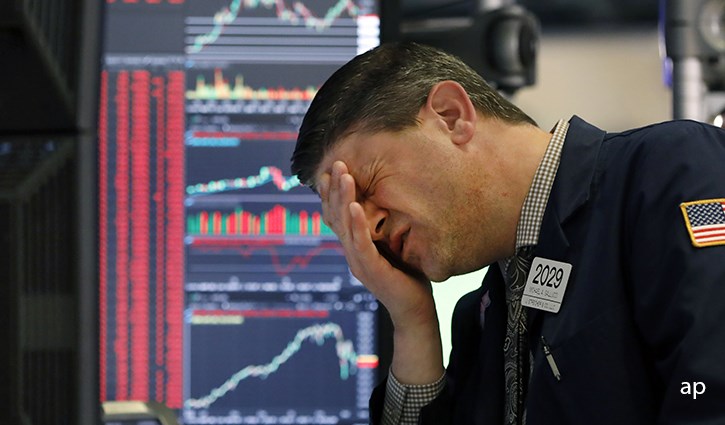
The heightened market volatility of the past few weeks has triggered “circuit breakers” on a number of occasions, which is when an exchange suspends market trading because moves are so extreme. This happened on March 9, March 12 and March 16 when US stock markets plunged at the open, forcing the New York Stock Exchange to suspend trading.
The idea behind an automatic halt to trading is to calm panic-stricken markets by forcing investors to take a brief pause from the ongoing chaos, review and reassess the situation, and acquire and assimilate information.
New York Stock Exchange president Stacey Cunningham said the trading halt was “working as it’s designed to function, so that the market can absorb what news was out overnight, how investors are reacting so they can make decisions, and everyone gets a chance to see what’s happening.”
In an era of high-frequency computerised trading, circuit breakers act as a speed bump when markets are in a tailspin and help restore calm.
What are Circuit Breakers?
In the US, the 15-minute stock market trading halts activate at three thresholds amid sharp and large downturn and volatility: Level 1 triggers a 15-minute trading pause when the market falls 7% below its previous close; a Level 2 trading halt kicks in when the market slides 13%; and, finally, when the index craters 20%, Level 3 is activated, suspending trading for the remainder of the day.
Level 1 and 2 halts are triggered only if market drop occurs before 3:25 p.m. Trading will continue if the fall occurs at or after 3:25 p.m. Level 3 halt can kick in any time during the trading day, closing markets for the rest of the day.
The idea is to call a brief time out allowing the chance to better match up buy and sell orders so when markets reopen they can function more smoothly and avoid exaggerated pricing due to illiquidity, explains Greg McBride, chief financial analyst at US-based financial services firm Bankrate.com. He calls it the “equivalent of catching your breath and counting to 10 before you say or do something rash.”
Do They Work?
But is it an effective mechanism to control a wild, sentiment-drive churn? Broadly, research suggests trading halts are efficient in maintaining stability and an orderly trading in the market. Pauses in trading serve to facilitate price discovery process by allowing investors the opportunity to digest the material information and adjust their trading interests.
But to calm panic? Not so much. Experts suggest such trading halts have a limited impact on an overall panic-selling activity, and in fact make people think they can’t sell, making them feel more anxious and ready to sell at any price.
“A trading halt is helpful to stem day to day declines, but it's a negative if (circuit breakers) keep getting triggered, as that will trigger a negative fear of missing out (FOMO) thematic,” says Darren Sissons, vice president and partner at Campbell, Lee & Ross in Canada.
Retail investors don’t fully understand how quantitative trading affects markets during times of panic, especially due to extraordinary events such as the coronavirus outbreak.
“Not just retail investors, no one fully understands until we’re in the middle of it or with the benefit of hindsight,” says McBride. "Programs run by computers can cause a stampede of selling because it is automated based on complicated formulas. There’s no grown up in the room to say, ‘Hey, wait a minute, is this correct?'”
High Frequency Trading
Programmatic trading, which is sometimes known as high-frequency or algorithmic trading, is actually enhancing risk at present as the underlying program narrative is to sell now, argues Sissons, adding that “the sell-off is happening with a complete disregard for fundamentals. Companies with net cash (more cash than debt) shouldn't be getting pummelled.”
In the end, the fundamentals win. “Within the context of properly functioning of markets, the fundamentals can be assessed and the price discovery that occurs helps establish where the bottom is,” says McBride.
Last week’s market suspension, however, didn’t appear to nearly achieve that objective. US stocks pared some of their steep losses momentarily on Thursday after the Federal Reserve intervention injecting $1.5 trillion to stem the carnage. However, the selling intensified right after trading resumed with the Dow closing off the day with a brutal 10% plunge, its worst since the 1987 market crash. The FTSE 100 also closed down nearly 11% that day.
The out-of-whack situation, which Sissons refers to as a full blown Black Swan – or unexpected catastrophic event – is expected to get worse before it gets better. “Collective, policy errors from central banks on interest rates and a market overreaction have led to panic selling,” asserts Sissons. “(The) best case is investors find a little peace and calm down,” he adds.




























